Cape Buffalo look fairly similar to Asian Water Buffalo and domestic cattle but having a shared superficial appearance is where any similarity ends! These wild African bovids are formidable beasts. When injured or provoked they’ve earned a fearsome reputation for displaying a level of toughness and aggression that ensures a year seldom passes in Zimbabwe where a hunter or poacher is not killed or gravely injured by a wounded buffalo….
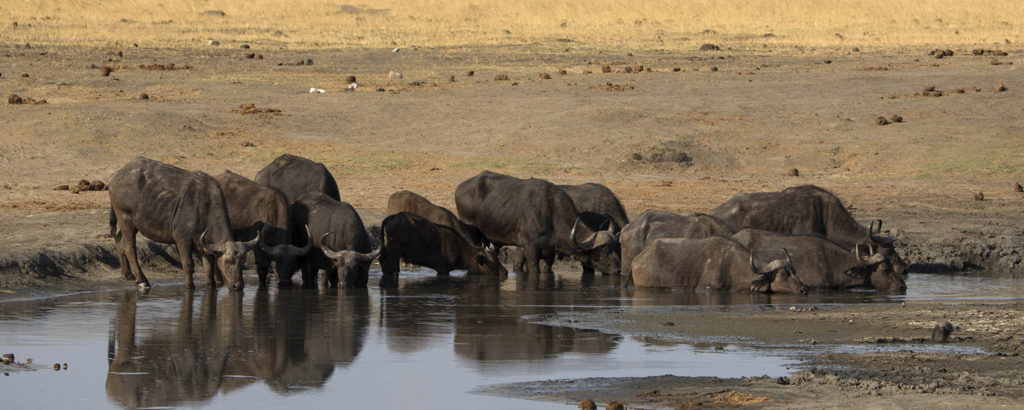
When going out to rescue a snared or injured buffalo, one needs to be aware that the animal is unable to distinguish between someone coming to help him, or someone coming to kill him, so a less than cordial welcome is always expected! Being injured and rather incapacitated this buffalo was particularly shy, secretive and smart!! He was not easy to find as he only approached a waterhole to drink late at night. The pronounced drag marks left by his wire snare were easy for an experienced tracker to follow but being aware of his vulnerability this buffalo would leave the waterhole and walk down-wind before turning around to lie-up in a patch of dense, shady vegetation. There he could easily and quickly respond to the scent of danger being carried on the wind to his alert nostrils.
To assess the condition of this buffalo, a few trail cameras were set around a target waterhole on private land bordering Hwange National Park. The cameras revealed he had a terrible 5-strand snare made from copper telephone wire around his neck with long trailing wires that dragged along the ground. Each time he stood on the snare it would tighten making it difficult for him to run or walk. It also appeared as if he had another snare or part of the original snare wrapped tightly around his back leg.
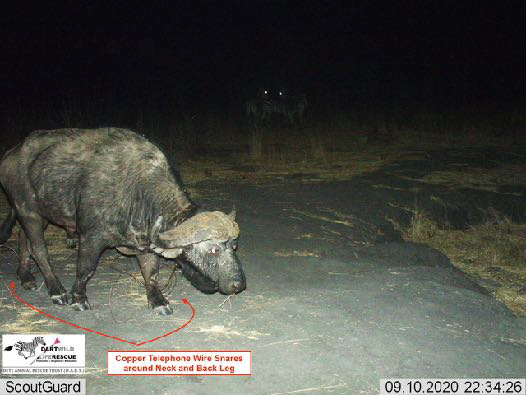
Despite successfully tracking the snared buffalo a number of times on foot, it was impossible to get close enough for clear darting shot.
With permission from the landowner Mr Magumula, help was requested from Hwange Horseback Safaris. Based on the known reaction and previous responses of this highly alert buffalo to close approaches by humans on foot, a strategy using the horses was devised. In anticipation of every possible permutation that the buffalo might employ to avoid being darted, it was decided to use the horses as a distraction to draw the buffalo’s attention away from the approach of the darting team. The ground darting team was led by our specialist tracker followed by two darters carrying dart rifles for use in different darting situations. Rifle protection was provided by an experienced professional carrying a heavy calibre weapon.
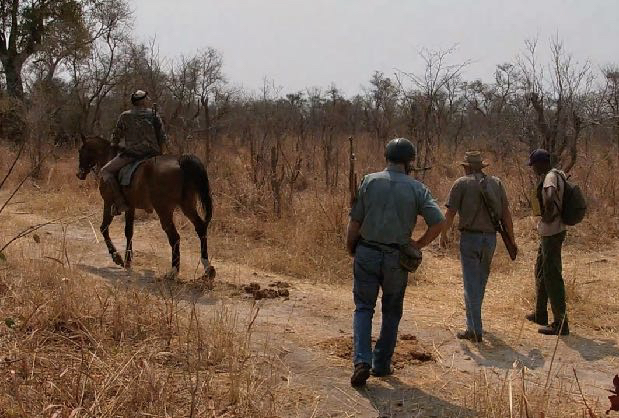
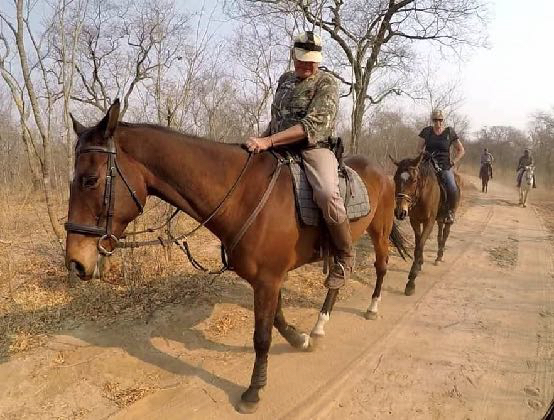
After successfully tracking the buffalo for almost 2km it was finally located lying down in the sparse shade of a cluster of leafless mopane scrub. This sparse vegetation provided no cover to conceal the team and the crunching sound of dry leaves under foot would easily be heard by the alert buffalo. Though the animal could be seen from a distance, darting wouldn’t be easy as the myriad dry branches around the bull could easily deflect a dart. We needed a closer approach!!
Creeping across an open landscape to within 25m of an injured and alert buffalo while armed only with a dart rifle certainly gets the adrenaline pumping. With Roy providing reassuring rifle security for the darting team it was the arrival of Denis and his brave horse that won the day for us by calming the buffalo and keeping its attention focused away from the approach of the team.

More than 15mins were spent waiting for a clear darting shot when suddenly the bull grew suspicious & turned to run. A brief gap appeared through the tangled branches and miraculously the dart avoided all the dry sticks before finding its mark in the buffalo’s rump. Six minutes later the buffalo was down, and the snares were quickly removed from its neck and hind leg.
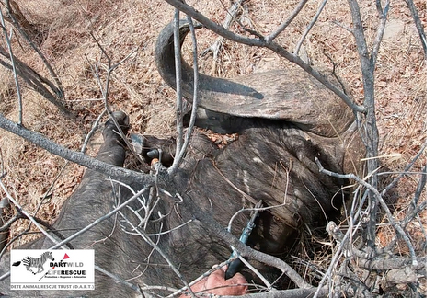
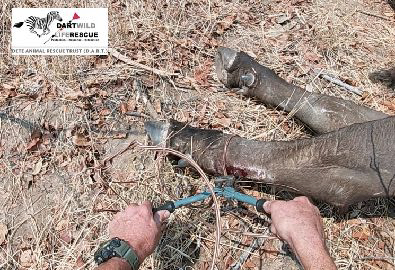
An operation of this nature is dependent upon close teamwork. We extend grateful thanks to landowner Mr Renias Magumula for reporting the snared buffalo and for permission to operate on his property; To Artfield Moyo of Ukhozi Wildlife Cooperative for expert tracking; Wildlife Vet Dr Rob Rees for darting support; Roy Aylward of Wings for Conservation for heavy rifle security; Denis and Sharon Nel and all at Hwange Horseback Safaris (including their brave horses) for ensuring the success of this potentially dangerous wildlife rescue. To ZimParks for their co-operation and assistance.
Thanks too to the Educasa Foundation, Hwange Conservation Society (HCS) UK, Southern African Conservation Trust (SACT), and Save African Rhino Foundation (SARF) for funds to support this initiative.